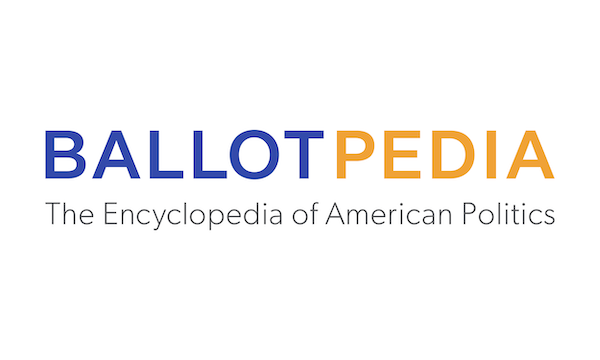
It’s been two years since Donald Trump was banned from Meta, but now he’s back. The company’s justification for allowing the former president to return to Facebook and Instagram – that the threat has subsided – seems to ignore that in the two years since the ban Trump hasn’t changed, it’s just that his reach has reduced.
Last week, Meta’s president of global affairs, Nick Clegg, announced that soon Trump will be able to post on Instagram and Facebook. The company said “the risk has sufficiently receded” in the two years since the Capitol riots on 6 January 2021 to allow the ban to be lifted.
What you might not have been aware of – except through media reports – was Trump’s response. That is because the former US president posted it on Truth Social, his own social media network that he retreated to after he was banned from the others. And it is effectively behind a wall for web users, because the company is not accepting new registrations. On that platform, Trump is said to have fewer than 5 million followers, compared to 34 million and almost 88 million he’d had on Facebook and Twitter respectively.
Meta’s ban meant that Trump wouldn’t have space on its platforms during the US midterms elections in 2022, but would anything have been different if Trump had been given a larger audience? As Dan Milmo has detailed, almost half of the posts on Trump’s Truth Social account in the weeks after the midterms pushed election fraud claims or amplified QAnon accounts or content. But you wouldn’t know it unless you were on that platform, or reading a news report about it like this one.
If given a larger audience, will Trump resume his Main Character role in online discourse (a role that Twitter’s new owner, Elon Musk, has gamely taken on in the past few months)? Or has his influence diminished? This is the gamble Meta is taking.
When Musk lifted Trump’s ban on Twitter in November after a user poll won by a slim margin, it was easy to read the former president’s snub of the gesture as a burn on the tech CEO. But it seems increasingly likely that the Meta decision about whether to reinstate him was looming large in Trump’s mind. Earlier this month, NBC reported that Trump’s advisors had sent a letter to Meta pleading for the ban to be lifted, saying it “dramatically distorted and inhibited the public discourse”. If Trump had gone back to Twitter and started reposting what he had posted on Truth Social, there would have been more pressure on Meta to keep the ban in place (leaving aside the agreement Trump has with his own social media company that keeps his posts exclusive on Truth Social for several hours).
Twitter lifting the ban and Trump not tweeting at all gave Meta sufficient cover.

The financials
There’s also the possible financial reasoning. Angelo Carusone, the president of Media Matters for America, said Facebook is “a dying platform” and restoring Trump is about clinging to relevance and revenue.
For months, Trump has been posting on Truth Social about how poorly Meta is performing financially, and in part trying to link it to him no longer being on Facebook. Meta has lost more than US$80bn in market value, and last year sacked thousands of workers as the company aimed to stem a declining user base and loss of revenue after Apple made privacy changes on its software (£).
But what of the ‘guardrails’?
Meta’s justification for restoring Trump’s account is that there are new “guardrails” that could result in him being banned again for the most egregious policy breaches for between one month and two years. But that is likely only going to be for the most serious of breaches – such as glorifying those committing violence. Clegg indicated that if Trump is posting QAnon-adjacent content, for example, his reach will be limited on those posts.
The ban itself was a pretty sufficient reach limiter, but we will have to see what happens if Trump starts posting again. The unpublished draft document from staff on the January 6 committee, reported by the Washington Post last week, was pretty telling about Meta, and social media companies generally. It states that both Facebook and Twitter, under its former management, were sensitive to claims that conservative political speech was being suppressed. “Fear of reprisal and accusations of censorship from the political right compromised policy, process, and decision-making. This was especially true at Facebook,” the document states.
“In one instance, senior leadership intervened personally to prevent rightwing publishers from having their content demoted after receiving too many strikes from independent fact-checkers.
“After the election, they debated whether they should change their fact-checking policy on former world leaders to accommodate President Trump.”
Those “guardrails” don’t seem particularly reassuring, do they?
Is AI really coming for your job?

Layoffs continue to hit media and companies are looking to cut costs. So it was disheartening for new reporters in particular to learn that BuzzFeed plans to use AI such as ChatGPT “to create content instead of writers”.
(Full disclosure: I worked at BuzzFeed News prior to joining the Guardian in 2019, but it’s been long enough that I am not familiar with any of its thinking about AI.)
But perhaps it’s a bit too early to despair. Anyone who has used free AI to produce writing will know it’s OK but not great, so the concern about BuzzFeed dipping its toes in those waters seems to be overstated – at least for now.
In an interview with Semafor, BuzzFeed tech reporter Katie Notopoulos explained that the tools aren’t intended to replace the quiz-creation work writers do now, but to create new quizzes unlike what is already around. “On the one hand,” she said, “I want to try to explain this isn’t an evil plan to replace me with AI. But on the other … maybe let Wall Street believe that for a little while.”
That seems to be where AI is now: not a replacement for a skilled person, just a tool.
The wider TechScape

This is the first really good in-depth look at the last few months of Twitter since Elon Musk took over.
Social media users are posting feelgood footage of strangers to build a following, but not every subject appreciates the clickbaity attention of these so-called #kindness videos.
If you’re an influencer in Australia and you’re not declaring your sponcon properly, you might be targeted as part of a review by the local regulator.
Speaking of influencers, Time has a good explanation for why you might have seen people posting about mascara on TikTok in the past few days.
Writer Jason Okundaye makes the case that it’s time for people to stop filming strangers in public and uploading the videos online in the hope of going viral.
Nintendo rereleasing GoldenEye007 this week is a reminder of how much the N64 game shaped video games back in the day.










